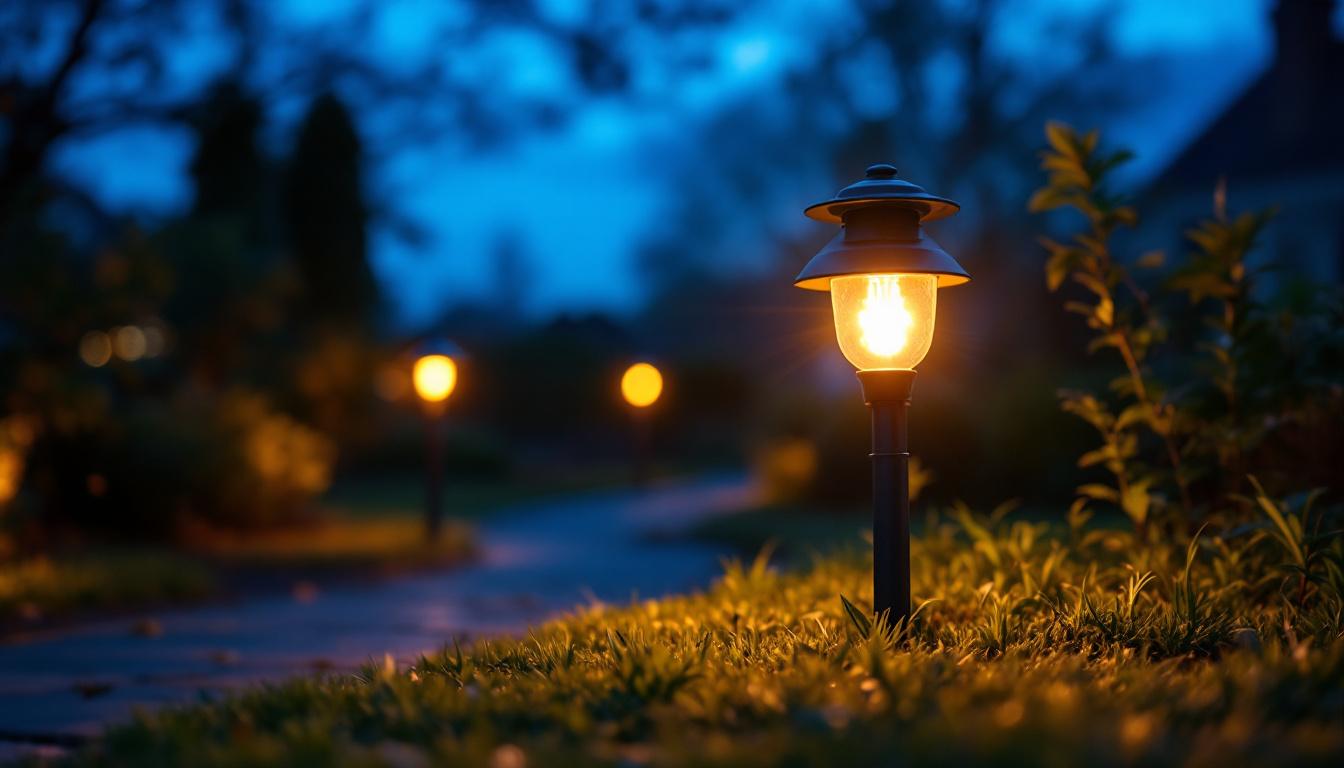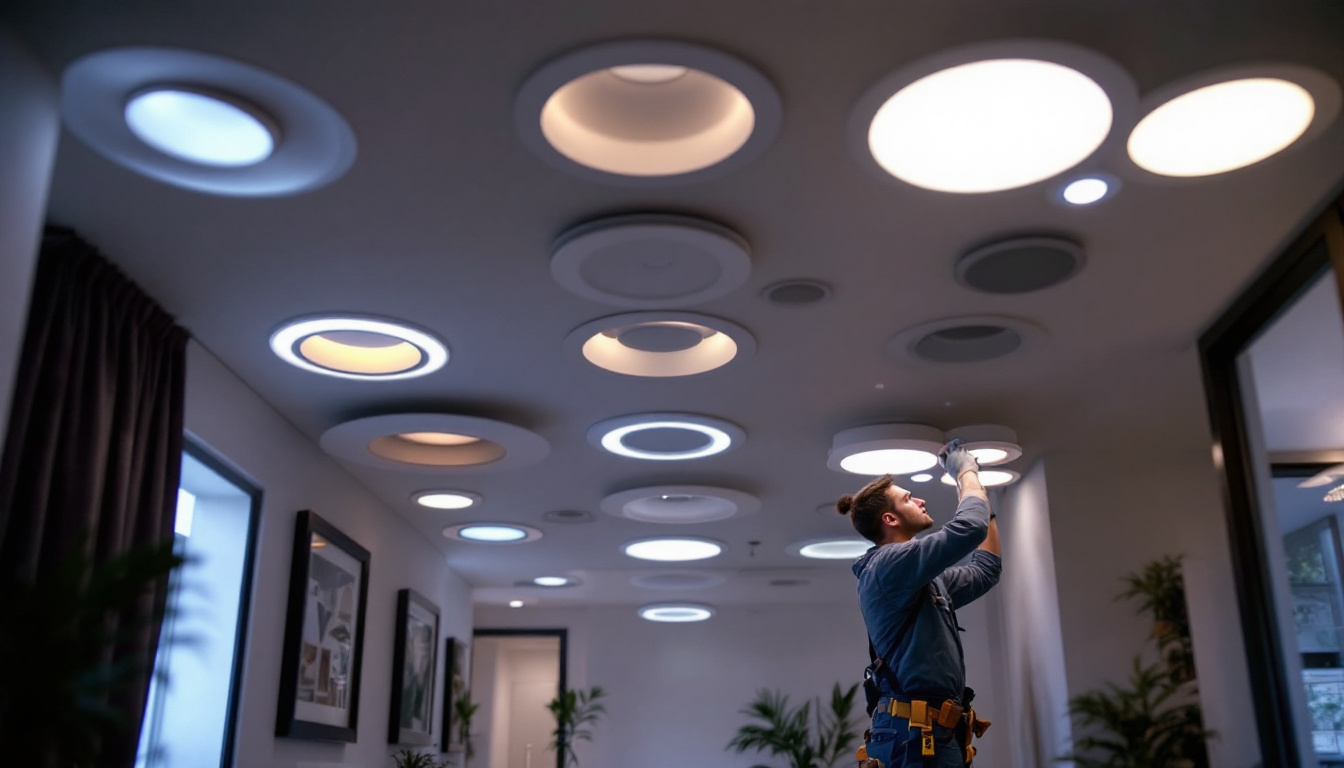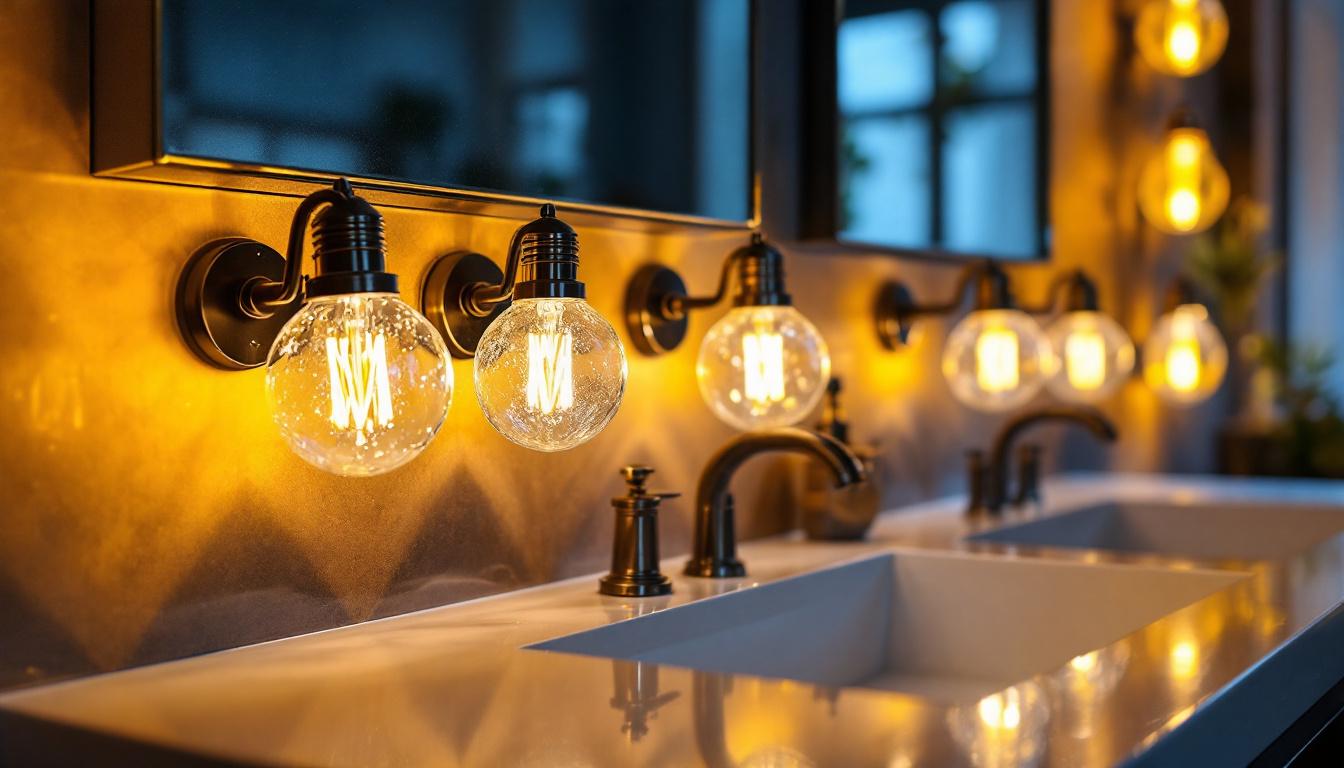
In the ever-evolving world of lighting technology, the LED dusk to dawn light bulb stands out as a significant advancement. For lighting contractors, understanding these bulbs is essential for both installation and client satisfaction. This article delves into the key aspects of LED dusk to dawn light bulbs, providing valuable insights for professionals in the field.
LED dusk to dawn light bulbs are designed to automatically turn on at sunset and off at sunrise. This feature not only enhances convenience but also contributes to energy savings and improved security. For contractors, knowing the mechanics of these bulbs can aid in better installation practices and customer education.
The core of an LED dusk to dawn bulb is its built-in photocell sensor. This sensor detects ambient light levels, triggering the bulb to activate when darkness falls. Conversely, it will turn off when daylight returns. This automation eliminates the need for manual operation, making it an appealing choice for residential and commercial applications alike.
Moreover, the LED technology itself provides a longer lifespan compared to traditional incandescent or fluorescent bulbs. This longevity reduces replacement frequency, which is a critical selling point for contractors looking to provide value to their clients. Additionally, many LED dusk to dawn bulbs are designed to withstand various weather conditions, making them suitable for outdoor use in diverse climates. Their durability ensures that they can function effectively in rain, snow, or extreme heat, further enhancing their appeal for outdoor lighting solutions.
For lighting contractors, promoting LED dusk to dawn light bulbs can lead to numerous advantages. First and foremost, these bulbs offer energy efficiency, which is increasingly important to environmentally conscious consumers. By installing LED lighting, contractors can help clients reduce their energy bills while also contributing to sustainability efforts.
Additionally, the ease of installation can be a significant selling point. Most LED dusk to dawn bulbs fit standard fixtures, allowing for quick upgrades without extensive rewiring or modifications. This simplicity can enhance customer satisfaction and lead to repeat business. Furthermore, many of these bulbs come with adjustable settings, allowing users to customize the sensitivity of the photocell sensor. This feature can be particularly beneficial in areas where ambient light levels fluctuate, such as near streetlights or in urban settings, ensuring that the lights operate optimally without unnecessary activation.
Another advantage for contractors is the potential for upselling related products. For instance, they can recommend compatible fixtures or additional lighting solutions that integrate well with LED dusk to dawn bulbs. This not only increases the overall project value but also positions the contractor as a knowledgeable resource for comprehensive lighting solutions, fostering trust and loyalty among clients.
While LED dusk to dawn bulbs are relatively easy to install, there are several factors contractors should consider to ensure optimal performance. Understanding these elements can help avoid common pitfalls and enhance the overall effectiveness of the lighting solution.
Before installation, it is crucial to assess the compatibility of the existing fixtures. LED dusk to dawn bulbs are designed to fit standard sockets; however, the fixture must be suitable for outdoor use and rated for the specific wattage of the bulb. Ensuring compatibility not only guarantees functionality but also minimizes the risk of damage to the bulb or fixture.
Contractors should also consider the placement of fixtures. Proper positioning can maximize the effectiveness of the photocell sensor, ensuring that the bulb activates and deactivates at the appropriate times. This attention to detail can significantly enhance customer satisfaction.
Given that these bulbs are often used outdoors, weather resistance is a critical factor. Many LED dusk to dawn bulbs are designed with durable materials that can withstand harsh weather conditions. However, it is essential to verify the IP (Ingress Protection) rating of the bulb to ensure it can handle exposure to moisture, dust, and extreme temperatures.
Contractors should educate clients on the importance of selecting weather-resistant bulbs, particularly in regions prone to severe weather. This knowledge can help prevent future issues and reinforce the contractor’s reputation as a reliable professional.
One of the most compelling reasons to recommend LED dusk to dawn light bulbs is their energy efficiency. Compared to traditional lighting options, these bulbs consume significantly less power, translating to lower energy bills for clients.
While the initial cost of LED bulbs may be higher than that of incandescent or CFL options, the long-term savings are undeniable. The reduced energy consumption leads to lower utility bills, and the extended lifespan of LED bulbs means fewer replacements over time. This combination of factors results in a lower total cost of ownership, making LED dusk to dawn bulbs an attractive investment for homeowners and business owners alike.
Contractors can leverage this information when discussing options with clients, emphasizing the financial benefits of choosing LED technology. Providing a clear comparison of energy costs over time can help clients make informed decisions.
In addition to cost savings, the environmental benefits of LED dusk to dawn bulbs are significant. These bulbs produce less carbon dioxide and other harmful emissions compared to traditional lighting options. By promoting energy-efficient solutions, contractors can play a vital role in reducing the overall carbon footprint of their clients’ properties.
Educating clients about these environmental advantages can enhance the contractor’s reputation as a responsible and forward-thinking professional. This approach not only helps in securing jobs but also fosters long-term relationships with environmentally conscious clients.
LED dusk to dawn light bulbs are versatile and can be utilized in various applications. Understanding these uses can help contractors recommend the right solutions for their clients’ needs.
In residential settings, LED dusk to dawn bulbs are commonly used for outdoor lighting. They are ideal for illuminating driveways, walkways, and entryways, enhancing safety and security for homeowners. The automatic on/off feature provides peace of mind, as homeowners do not have to worry about manually turning lights on or off.
Additionally, these bulbs can be used in decorative outdoor fixtures, adding aesthetic value while maintaining functionality. Contractors should consider suggesting stylish options that complement the home’s design while providing the benefits of automated lighting.
For commercial and industrial clients, LED dusk to dawn bulbs can significantly enhance security measures. Parking lots, loading docks, and outdoor storage areas benefit from consistent illumination, deterring potential criminal activity. The energy efficiency of these bulbs also aligns with the cost-saving measures many businesses are looking to implement.
Contractors can highlight the importance of safety and security in commercial applications, positioning LED dusk to dawn bulbs as a practical solution. Providing case studies or examples of successful installations can further bolster credibility and encourage clients to make the switch.
While LED dusk to dawn light bulbs offer numerous benefits, there are challenges that contractors may encounter during installation and use. Addressing these challenges proactively can enhance the overall experience for both contractors and clients.
One common challenge is the sensitivity of the photocell sensor. In some cases, the sensor may be too sensitive or not sensitive enough, leading to unintended activation or deactivation of the bulb. This can be particularly problematic in areas with fluctuating ambient light levels, such as near streetlights or under heavy tree cover.
Contractors should educate clients on the potential for sensor issues and discuss the importance of proper placement. In some cases, it may be beneficial to recommend bulbs with adjustable sensitivity settings, allowing for customization based on specific environmental conditions.
Another challenge is the initial cost of LED dusk to dawn bulbs, which can deter some clients from making the switch. Contractors can address this concern by providing a clear breakdown of the long-term savings associated with energy efficiency and reduced maintenance costs.
Offering financing options or discussing potential rebates for energy-efficient upgrades can also alleviate financial concerns. By presenting a well-rounded argument that highlights both immediate and long-term benefits, contractors can help clients see the value in investing in LED technology.
The lighting industry is constantly evolving, and staying informed about future trends can help contractors remain competitive. Understanding where the market is heading can assist in making informed recommendations to clients.
One of the most significant trends in lighting technology is the integration of smart features. Many LED dusk to dawn bulbs are now compatible with smart home systems, allowing for remote control and scheduling through mobile apps. This capability enhances convenience and can be a major selling point for tech-savvy clients.
Contractors should familiarize themselves with the various smart lighting options available and be prepared to educate clients on how these systems work. Offering installation services for smart lighting can also provide an additional revenue stream for contractors.
As technology advances, LED lighting continues to become more energy-efficient. New developments in LED technology promise even lower energy consumption and improved performance. Contractors should stay abreast of these advancements to provide clients with the most current and effective solutions.
By being knowledgeable about the latest trends and technologies, contractors can position themselves as industry leaders, fostering trust and credibility with clients.
LED dusk to dawn light bulbs represent a significant advancement in lighting technology, offering numerous benefits for both contractors and clients. Understanding the mechanics, advantages, and potential challenges of these bulbs is essential for lighting professionals looking to provide top-notch service.
By promoting energy efficiency, educating clients about applications, and staying informed about industry trends, contractors can enhance their offerings and build lasting relationships with clients. As the demand for sustainable and automated lighting solutions continues to grow, embracing LED dusk to dawn technology will be a key component of success in the lighting industry.
Ready to elevate your lighting solutions and impress your clients with the efficiency and sophistication of LED dusk to dawn light bulbs? Look no further than LumenWholesale for all your lighting needs. We provide contractors with the highest quality, spec-grade lighting products at unparalleled wholesale prices. Say goodbye to local distributor markups and hello to a vast selection of industry-standard lighting that promises reliability and performance. Plus, with free shipping on bulk orders, you can stock up on premium lighting without worrying about hidden fees. Don’t compromise on quality or value—choose LumenWholesale for the best in lighting solutions. Wholesale Lighting at the Best Value is just a click away.

Discover the top-rated recessed lights that can elevate your projects and boost client satisfaction.

Discover essential tips from lighting contractors on selecting and installing LED lighting products.

Discover the essential insights lighting contractors need to meet client expectations regarding UV duct lights.

Discover the essentials of vanity bulb lights with our comprehensive guide tailored for lighting contractors.